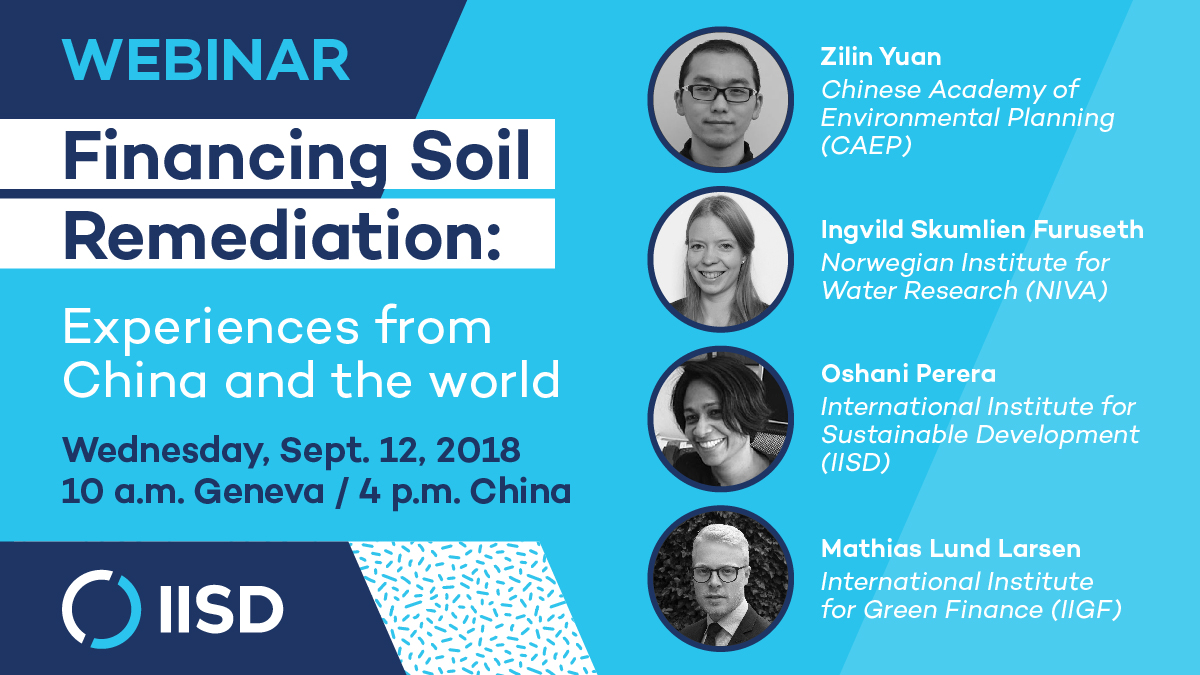Financing Models for Soil Remediation in China
Our work on soil remediation focuses on the financial vehicles available to attract investment to environmental rehabilitation of degraded land, and the financial reforms needed to make these vehicles a viable and desirable means of investing in land rehabilitation in China.
The legacy of environmental problems stemming from earlier phases of China’s industrial developments must be addressed.
Estimates suggest nearly 20 per cent of farmland is contaminated in China, with total remediation costs for land and water estimated at six to nine trillion RMB in the next five years for farmland, groundwater and industrial site rehabilitation. It’s expected only about 15 per cent of these funds will be from public sources; the rest will have to be raised from private sources, leveraging capital markets or through public-private partnerships.
If a reformed, “green” finance system is to realize its potential in China, one of its most urgent priorities will be to ensure adequate funding for greener forms of development such as green urban infrastructure, renewable energy, clean industrial technology, public transport and more.
The challenge may seem daunting, but so are the consequences of not addressing the issue. The future stability of the society, and the very legitimacy of the government, is closely linked to building confidence both in the urgency attributed to the issue and visible progress in addressing the worst of the problems.
This is why we’re working on financing models for soil remediation in China.
Our work focuses on the financial vehicles available to attract investment to environmental rehabilitation of degraded land, and the financial reforms needed to make these vehicles a viable and desirable means of investing in land rehabilitation in China. We draw on best practices worldwide in funding environmental rehabilitation, with special focus on the design and use of financial mechanism to attract private investors, share the risk and offer a clear benefit from the rehabilitated land.
We cover the entire spectrum from models that leverage public funding to create financing at scale right across to new social entrepreneurship models and community-based mobilization of funding. We look at the policy framework of incentives and disincentives and identify both policy, regulatory and institutional gaps to be filled.
This work is done in partnership with the Chinese Academy of Environmental Planning (CAEP) under the Ministry of Ecology and Environment (MEE) and with the International Institute of Green Finance (IIGF) of the China Central University of Finance and Economics (CUFE), and with both the Norwegian Institute for Water Research (NIVA) and Center for International Climate and Environmental Research – Oslo (CICERO) in Norway.
This project is supported by the Norwegian Ministry of Foreign Affairs.
Learn about other areas of our green finance work.

Join us Wednesday at 10:00 a.m. CEST / 8:00 a.m. GMT to discuss the relevance, opportunities and risks of exploring innovative models and instruments for financing soil remediation projects.
We will explore how soil remediation become a worthwhile investment for holders of private capital, and how can we ensure that the limited investments from the public purse are used optimally. Webinar participants will have the opportunity to ask questions, provide insights and share strategic and other considerations.
Latest
You might also be interested in
NATALIE - Nature-based Solutions to Enhance Resilience to Climate Change
NATALIE focuses on advancing ecosystem-based adaptation in Europe, combined with climate-resilient development pathways, developing impactful nature-based solutions (NbS) to accelerate and mainstream the adoption of NbS for climate change resilience.
Natur'ELLES
This project aims to improve mangrove protection through an ecosystem approach, using nature-based solutions to benefit 8,000 people, particularly women, in the Sine Saloum and Casamance deltas in southern Senegal.
FERMA: Femmes Résilientes au Moyen-Atlas
Using an integrated approach to forest ecosystem management, the FERMA project will work with twenty-five women's cooperatives in the Khénifra National Park region of Morocco, supporting their resilience in the face of climate change.
Using Systemic Approaches and Simulation to Support Transformation Toward Sustainable Mobility
This project aims to drive investments under post-pandemic recovery plans and development strategies towards transformation in the mobility and transport sector.
